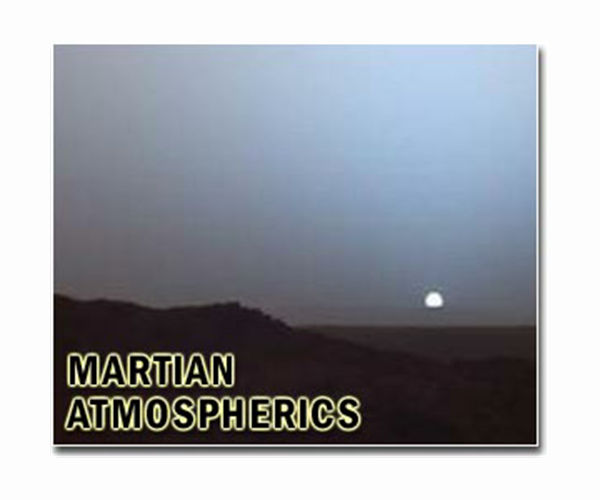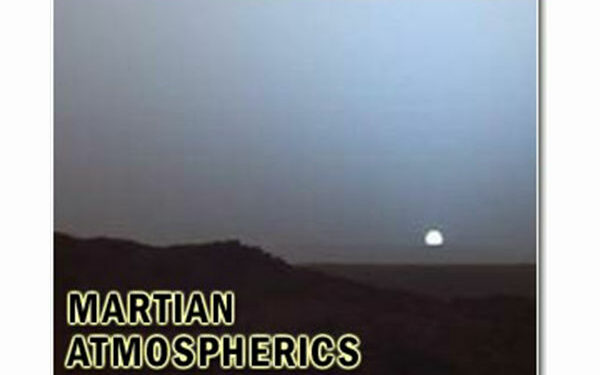
Perseverance Pays off When Studying the Martian Atmosphere
by Claire Newman | Atmospheric Science – Aeolis Research
Pasadena CA (JPL (SPX) Apr 01, 2024
Studying the atmosphere with Perseverance can be challenging! Imagine spotting an interesting cloud in a photo taken yesterday; unlike something interesting on the surface, more observations just aren’t possible, as it’s long gone by now. Or imagine trying to take a movie of a dust devil zooming across Jezero crater, when the rover’s daily activities are all planned out before the rover even wakes up. The fact that many atmospheric phenomena are short-lived and/or hard to predict, and often only occur during certain time periods, means that atmospheric scientists on the Mars 2020 team must use different strategies to observe them.
Firstly, the sensors that make up the primary atmospheric instrument (the Mars Environmental Dynamics Analyzer, MEDA) make meteorological and related observations continuously at least every other hour of every sol. This gives us a very good chance of capturing transient and hard-to-predict phenomena.
Secondly, for sensors that can’t measure as often – like the cameras and microphone – we take measurements over multiple sols at different times and (for imaging) directions, to build up statistics on when and where interesting phenomena occur.
Thirdly, when we expect to see something unusual based on the time of year or location, we increase the cadence of measurements to make sure we capture that event. In Perseverance’s first year on Mars we observed a scattering halo toward the end of Mars’s cloudy season. This bright ring around the Sun is caused by large hexagonal ice crystals that only form when lots of water vapor is present. Despite dozens of attempts to image another in the second Mars year, it wasn’t until our last attempt – right before the cloudy season ended – that we saw one.
And finally, when a longer-lived rare event is underway, we react by adding in more measurements. There are currently lots of dust storms happening on Mars, and with some passing right over Jezero we’ve recently measured the largest dust opacities of the entire mission to date! So we’ve been taking additional observations to tell us about how the atmospheric state, dustiness, and local dust lifting have been changing due to this storm activity.
For many of these observations, we don’t know if we’ll even ‘catch’ the atmospheric phenomena we’re trying to study until we get the results back on Earth. But even knowing when, where, and under what conditions something doesn’t occur is very useful. And by persevering, we’ve been able to obtain fantastic observations of everything from clouds and halos to dust devils and the onset of dust storms.
Throwback to the Little ‘Mushroom’
by Hemani Kalucha, Ph.D. Student at Caltech
Back in 2022, Perseverance found my favourite rock on the mission so far: a flat piece with a mushroom-shaped rock feature sticking out of it! The “mushroom” is about 1-2 cm tall and less than 1 cm wide. The rock was in an area the rover explored called Hogwallow Flats. Many aspects of Hogwallow Flats set it apart from the rest of the rocks in Jezero: it was very fine-grained compared to other units, it contained a higher proportion of sulfate salts, and it had interesting rock features like the “mushroom” within it.
The “mushroom” is actually a geologic feature known as a concretion. Concretions are solid masses within a rock that form as water flows through sediment, dissolving minerals and reprecipitating them in a more compacted configuration.
Concretions are usually harder than the surrounding rock, making them less vulnerable to erosion and weathering. On Earth, concretions come in a wide variety of shapes (spherical to irregular) and sizes (1 mm to 2.2 meters) and they first appear in the terrestrial rock record over 3 billion years ago. We do not know when the “mushroom” concretion at Hogwallow Flats was first formed but as wind carved out the surface of Mars over billions of years, it eroded the softer bedrock around this hard concretion.
Now all that’s left of the surrounding bedrock is a very thin rock spire connecting the concretion to the flat rock below, like a miniature version of the giant hoodoo features of the American southwest. Near this interesting feature, we also saw big, disc-shaped concretions, small, spherical concretions, and pointy concretions! It was an exciting summer, full of a variety of concretion shapes.
The rover cored a sample from Hogwallow Flats called ‘Bearwallow’ that may contain a concretion so if the samples are returned to Earth, we will be able to learn even more about martian concretions and how they were formed! Another interestingly wind carved martian rock is this ‘spoon’ shaped rock captured by Curiosity rover in 2015.
Related Links
Perseverance Mars 2020
Mars News and Information at MarsDaily.com
Lunar Dreams and more
